20 Jun 2016
Fiona Froehlich and Neil Forbes give advice on various hazards bird owners should be aware of when looking after their pets at home.

Figures 4 and 5. On occasions, toys sold for birds turn out to be harmful.
Psittacine birds are inquisitive by nature (Figure 1) and can encounter a variety of dangers in the home.
This article focuses on several hazards bird owners and veterinarians should be aware of to keep these animals safe.
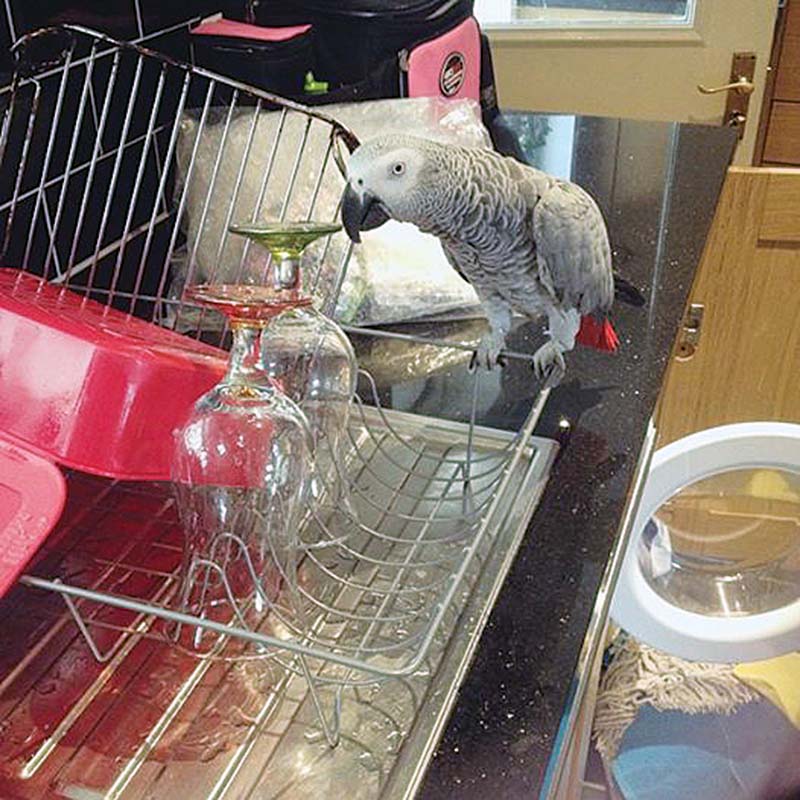
Smokes and fumes pose a very serious threat to birds due to their efficient respiratory anatomy, physiology and rapid metabolism.
Exposure to nicotine can lead to conjunctivitis, rhinitis and pulmonary disease, and may predispose birds to respiratory infections. A passive-smoking parrot has been shown to have the same nicotine metabolites as an actively smoking human. When a bird is presented for veterinary care and nicotine smell is evident on the bird, carrier or towels, the owner needs to be made aware it is not acceptable to keep a bird in a smoky environment.
It should be noted, under Section 9 of the Animal Welfare Act 2006, the owner or keeper of any animal is legally obliged to provide the animal with “husbandry” to a level of “good practice”. Keeping a parrot in a room where someone is smoking is not only neglecting good practice, but it is technically a legal offence.
A further dangerous volatile agent is carbon monoxide. Birds are historically known for their susceptibility to this toxin, as canaries were used as sentinel animals in coal mines to give early warning of dangerous high carbon monoxide levels.
Carbon monoxide can be found in open fires, solid fuel burners, central heating boilers and cars. It is recommended any room where a bird is kept should have carbon monoxide and smoke sensors installed. Naked flames, such as candles, fireplaces and barbecues, should be avoided as they can release harmful smoke and may burn toxic products, such as plastic. Birds are also at risk from flying into any open fires, uncovered saucepans or uncovered water, such as ponds.
Teflon (polytetrafluoroethylene; PTFE) is highly toxic to birds. This product is used to line non-stick cookware, grill sheets, certain self-clean ovens, paint on solid fuel burners, some ironing boards and irons, water proofing on some outdoor clothing, the matt black surface on some heat lamps, the toughening agent in some household gloss paints and working parts of some hair dryers.
If PTFE is overheated, within minutes it will affect all birds in the building, resulting in a fatal respiratory toxic reaction.
Hairsprays, air fresheners, perfumes and other scented products can cause a variety of clinical signs, from minor irritation and sneezing to severe breathing difficulties and feather plucking. Scented candles, sprays and perfumes should be avoided in the vicinity of birds. Cleaning products containing ammonia or bleach, nail polish remover, glues (or any product with a volatile solvent), pesticides, rodenticides and paint should also not be used close to birds.
New carpets and the adhesives used to fit them often contain harmful chemicals, so new carpets should be aired out prior to installation, or the bird should be moved out for two weeks after fitting. Birds should also be removed from areas of building work and only placed back when good air quality can be guaranteed. Plaster dust, in particular, is a real risk.
Installing air filters and purifiers, as well as providing regular fresh air ventilation, helps to maintain good air quality.
In the event of exposure to volatile toxins, birds must be removed from the source immediately and fresh air ventilation provided. However, birds should only be taken outdoors if this can be done safely within a cage. Oxygen and a calm environment should be provided as a first-line treatment if any bird is presented with sudden onset dyspnoea. Bronchodilators, such as terbutaline, and diuretics may be beneficial.
No bird may be kept in, near to, or downwind from, a hay store or a field where hay is being made; likewise, any other source of damp vegetable material, such as chipped fresh plants or equine ménage surface, due to the risk of aspergillosis.
Many household plants are toxic to birds, including oleander, rhododendron, lilies and amaryllis. Plants known to be toxic to other species should be considered harmful to birds too.
Ingestion of plants may lead to neurological, cardiac, renal or gastrointestinal signs. Toxic foods include avocado, chocolate, coffee beans, onions, salty snacks and mushrooms.
Food prepared for human consumption contains high levels of fat, salt, sugar and protein, and should be avoided. Fresh fruit should be removed after six hours (four hours in hot weather) to avoid bacterial or yeast overgrowth that might result in gastrointestinal infection. Birds should not receive any food that has been in contact with human saliva due to the high risk of crop infection. For this reason, owners should also be discouraged from “kissing” their pet birds or feeding from the mouth.
In cases of oral ingestions of toxins such as food items, plant material or human medicines, the owner should be advised to provide the packaging or ingredient list of any ingested toxins. A crop lavage under general anaesthetic, including intubation, is indicated if the patient is presented within two hours to three hours of ingestion. A crop lavage should not be attempted if corrosive substances, alkali or acids, have been ingested or diluted with milk. Non-acid fruit juices are recommended.
Medical induction of emesis, as in other species, is neither effective nor recommended due to the high risk of aspiration. Activated charcoal is a non-specific absorbent that can be used at 1mg/kg to 3mg/kg (not effective for corrosive substances or heavy metals) and may bind some toxins.
Seizures following intoxication can be controlled with midazolam (0.1mg/kg to 0.5mg/kg IM, IV or intranasally).
Ingestion of zinc, lead or copper can lead to heavy metal intoxication. Birds may ingest small amounts of metal over a long period of time, leading to clinical signs such as weakness, lethargy, tremors, diarrhoea, regurgitation and haematuria (especially amazons; Figure 2).
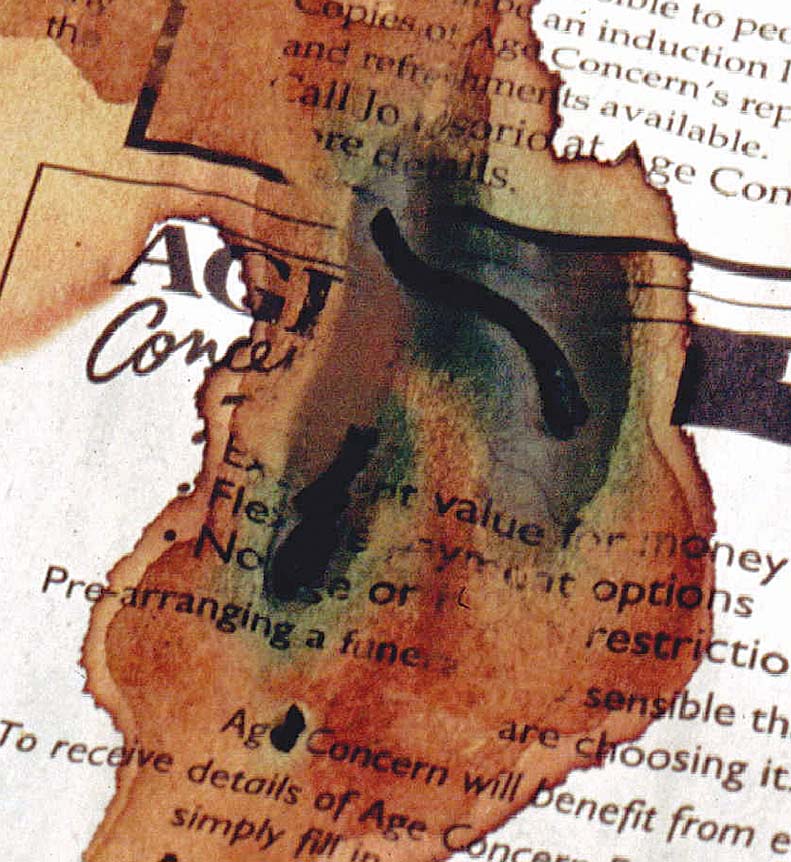
Coat hangers, curtain or fishing weights, metallic toys, keys, chains and bells can be a source of metal and need to be removed from the cage. All remaining bowls, hangers and toys in the cage need to be made from stainless steel. Some cage bars might be painted with lead-based or zinc-based paint and should be replaced by a modern (certified as safe) cage.
A suspicion of heavy metal ingestion arises if metal density structures are seen on radiographs (Figure 3) and proven by blood level testing (avoid syringes with a rubber plunger). However, do not forget main sources of lead and zinc are non-metallic, or could have been ground up, so a lack of metal particles on an x-ray does not exclude heavy metal toxicity as a differential diagnosis.
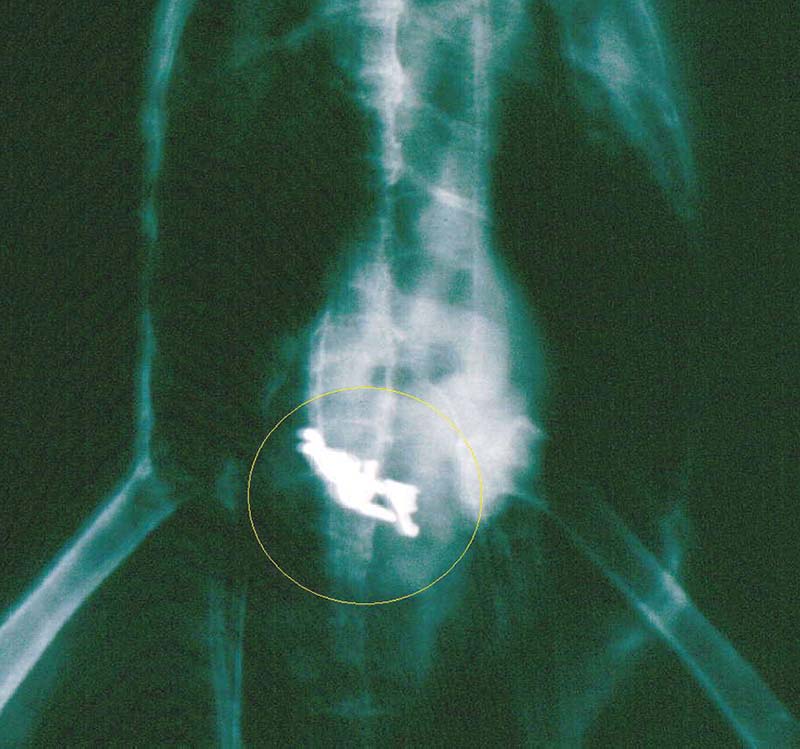
Sodium calcium ethylenediaminetetraacetic acid (30mg/kg q12h by IM injection for 5 days) or, if not available, D-Penicillamine (55mg/kg q12h per os for 2 weeks to 3 weeks), may be used for chelation therapy.
Unfortunately, traumatic incidents, such as flying against windows, getting trapped in a closing door, flying into a rotating ceiling fan or electrocution by chewing electric wires are still common reasons for presentations. All toys and materials available to the bird need to be safe to chew, as, on occasions, toys sold for birds turn out to be harmful (Figures 4 and 5).
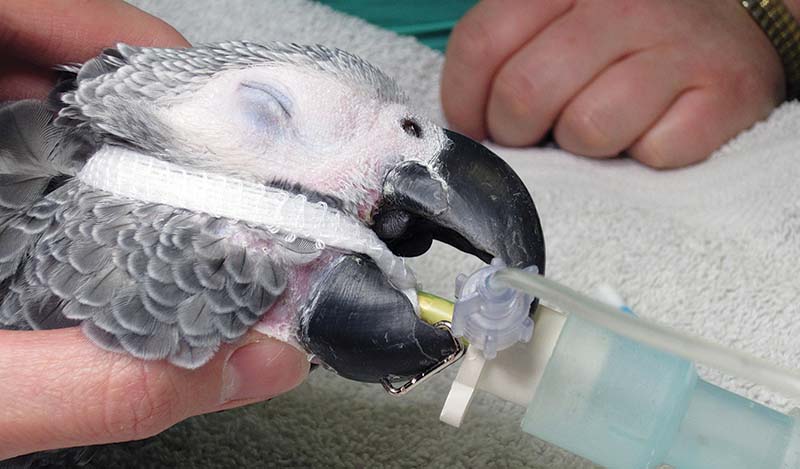
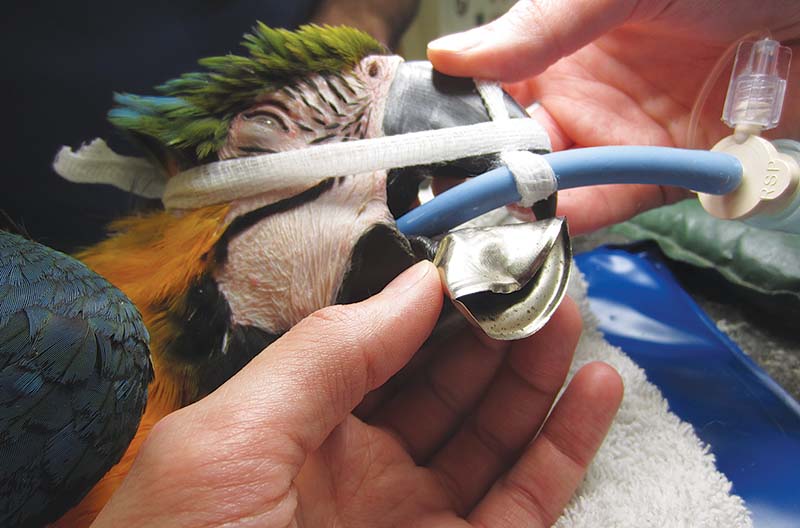
Owners need to ensure all windows and doors are safely closed when the birds are out of the cage. If there is a risk of doors or windows being opened by children or animals, mosquito netting may be fitted in a frame over the window or door, so they can be opened safely. A free-flying bird should not be left unattended or unsupervised with other pets (including birds) or children.
Mirrors, fans (especially ceiling fans) and sharp objects need to be removed or covered to minimise the risk of trauma. Open fires, unprotected chimneys and uncovered saucepans on the stove are also a particular risk for thermal injuries (Figure 6).
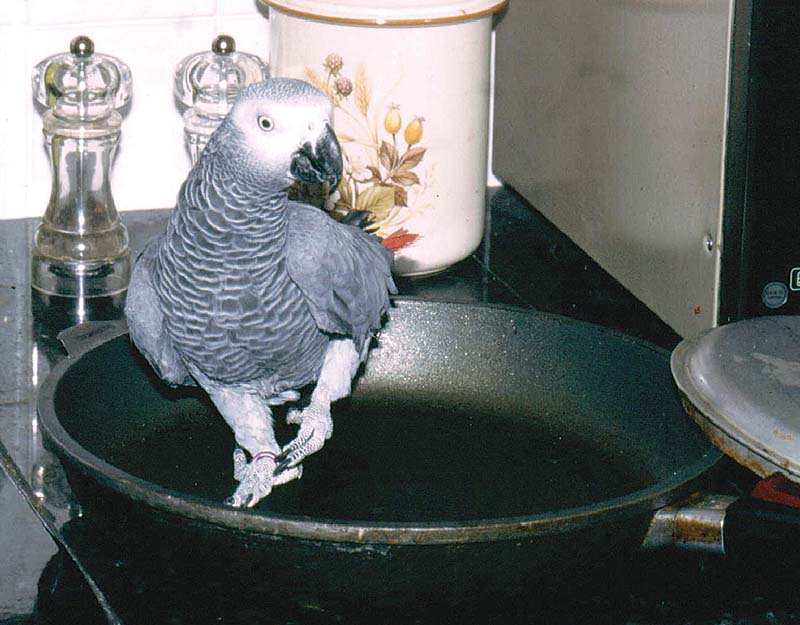
Thermal injuries may need intensive treatment similar to other species, including antibiotic therapy, pain relief, IV fluid therapy as well as topical treatment. In cases of haemorrhage, the owner should address any bleeding as soon as possible with digital pressure, if it is possible to do so without further agitation to the patient.
The bird should be allowed to calm down in a dark, quiet environment and the owner may monitor for swellings, wounds or changes in posture following a trauma.
Veterinary care should be sought, preferably from an avian vet, as almost all cases of toxicoses require nutritional support.
It is important to consider biosecurity in a multi-bird household. No contact should be allowed with wild birds, poultry, waterfowl or pigeons (when kept in an outdoor aviary) and new birds should be tested for psittacosis (Chlamydophila psittaci), psittacine beak and feather disease, and polyoma virus. These pathogens can be carried by clinically healthy birds and infect an immunoincompetent bird.
It is recommended new birds are kept quarantined in a separate room for a minimum of eight weeks.
Accidents and traumas can never fully be eliminated, but veterinarians should provide advice and guidance to owners to avoid any unnecessary injuries and intoxications at home.